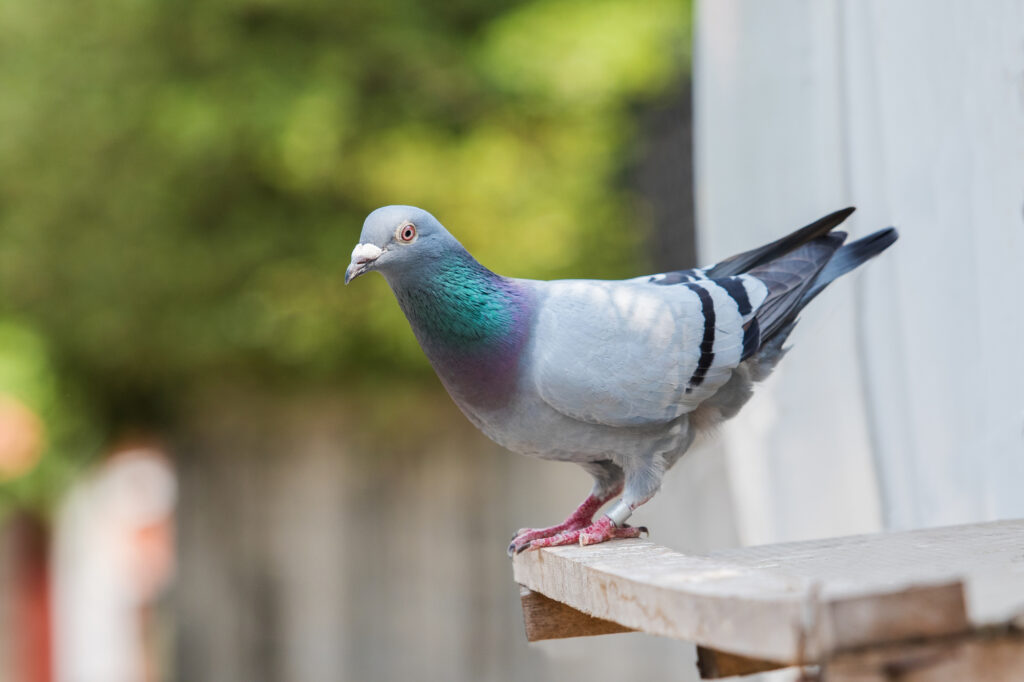Listening to birds is, of course, just as important in bird identification as watching them. Often, we may not see the birds we hear, which can open up the possibility of learning more about different bird species.
At night, hearing owls helps us identify the species present, even when we don’t necessarily see them.
Sometimes, you might hear a bird during the day that sounds a little like the owls you hear at night. But since nocturnal species (most owls) won’t be about in daylight hours, this must be one of the other birds.
Key Takeaways
- Nocturnal bird calls: Understanding owl sounds helps identify other birds that could be mistaken for owls, especially since owls have more varied calls than commonly thought, from screams to whinnies.
- Owls vs. doves: Remember that mourning doves are very common daytime soundalikes for owls, with their cooing mistaken for owl hoots. Pigeons and other doves also produce owl-like calls.
- Nighttime songsters: Night birds such as the Whip-poor-will and Chuck-will’s-widow confuse listeners with their rhythmic calls, a big contrast with the typically shorter calls of owls.
What Do Owls Sound Like?
The most important thing to understand is that owls do not all sound the same. Identifying other birds that might sound like them means that you have to clarify which owl sounds you think you might have heard.
Barn Owls
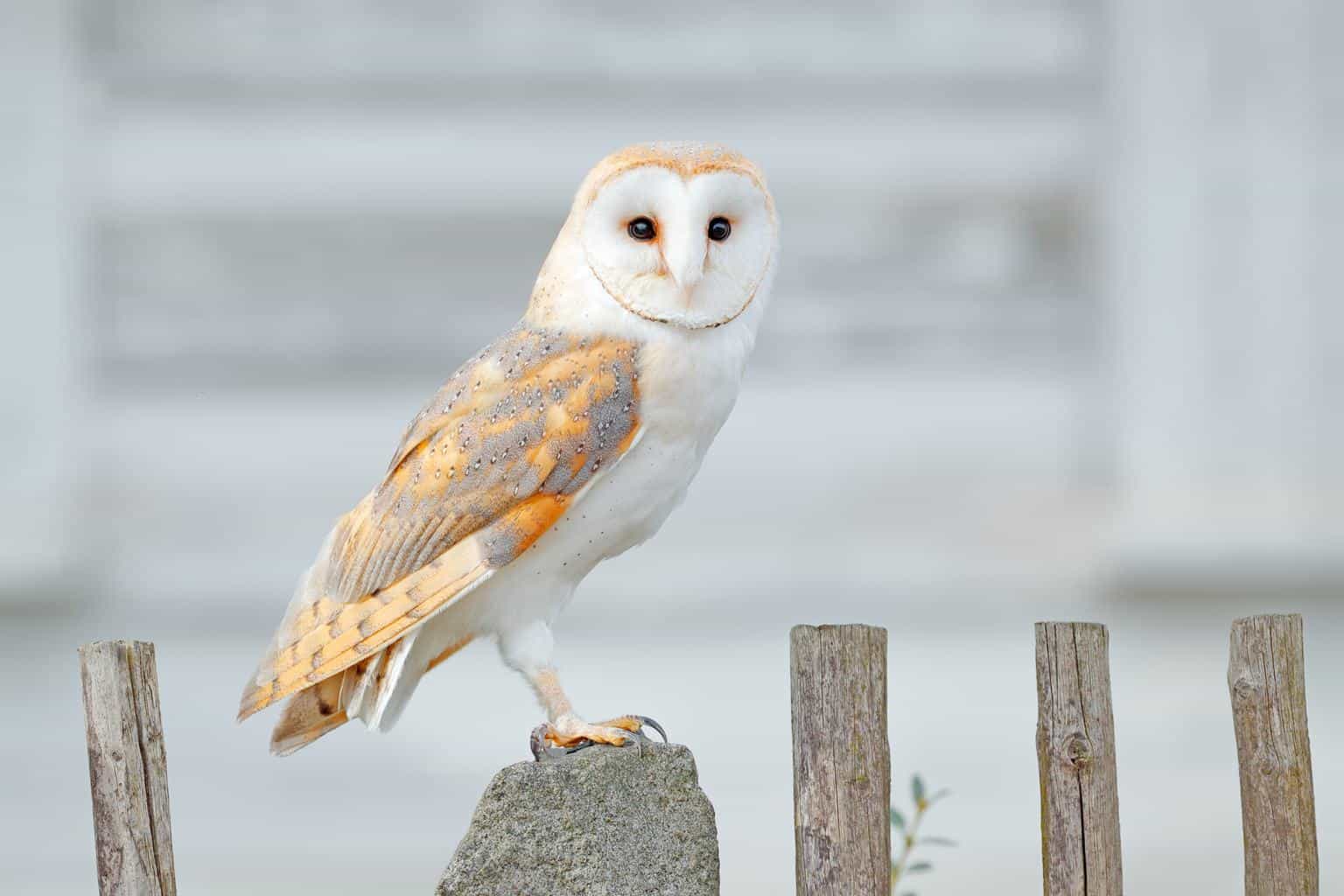
Barn owls do not hoot like many other owls. Instead, they let out a long, harsh scream that lasts for a few seconds.
This sound is typically made by the males and infrequently by the females.
There is also a softer ‘purring’ variant of this call that males make to call females to inspect a nest site, and females use to beg for food from the males.
When it comes to birdwatching, barn owls are one of the easier birds to identify because of how distinctive and haunting they sound. This brief YouTube short by Nature’s Edge Wildlife will give you a good idea of what to expect.
Barred Owls
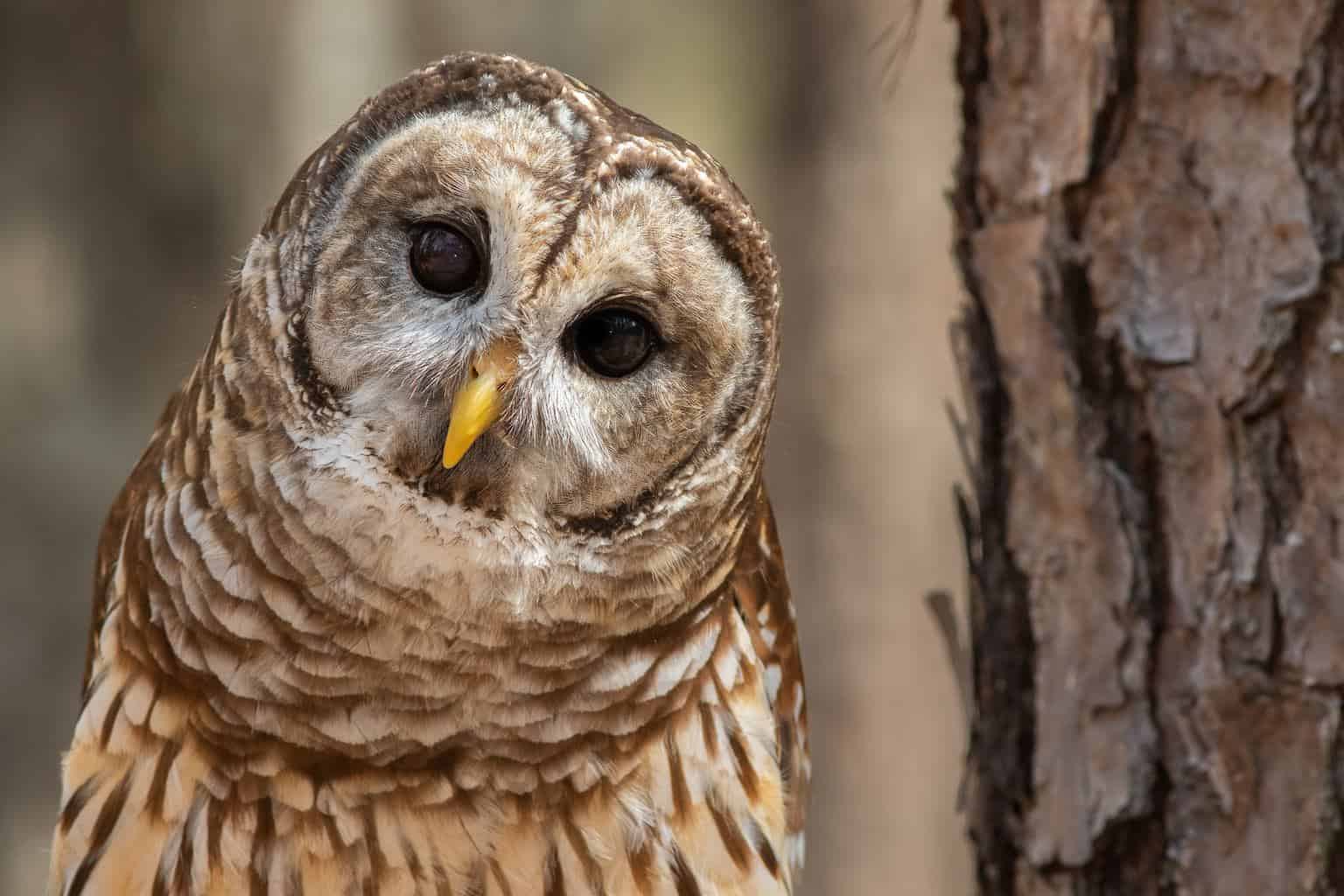
The barred owl has a distinctive hooting call, often said to sound like the phrase ‘Who cooks for you? Who cooks for you all?’.
Boreal Owls
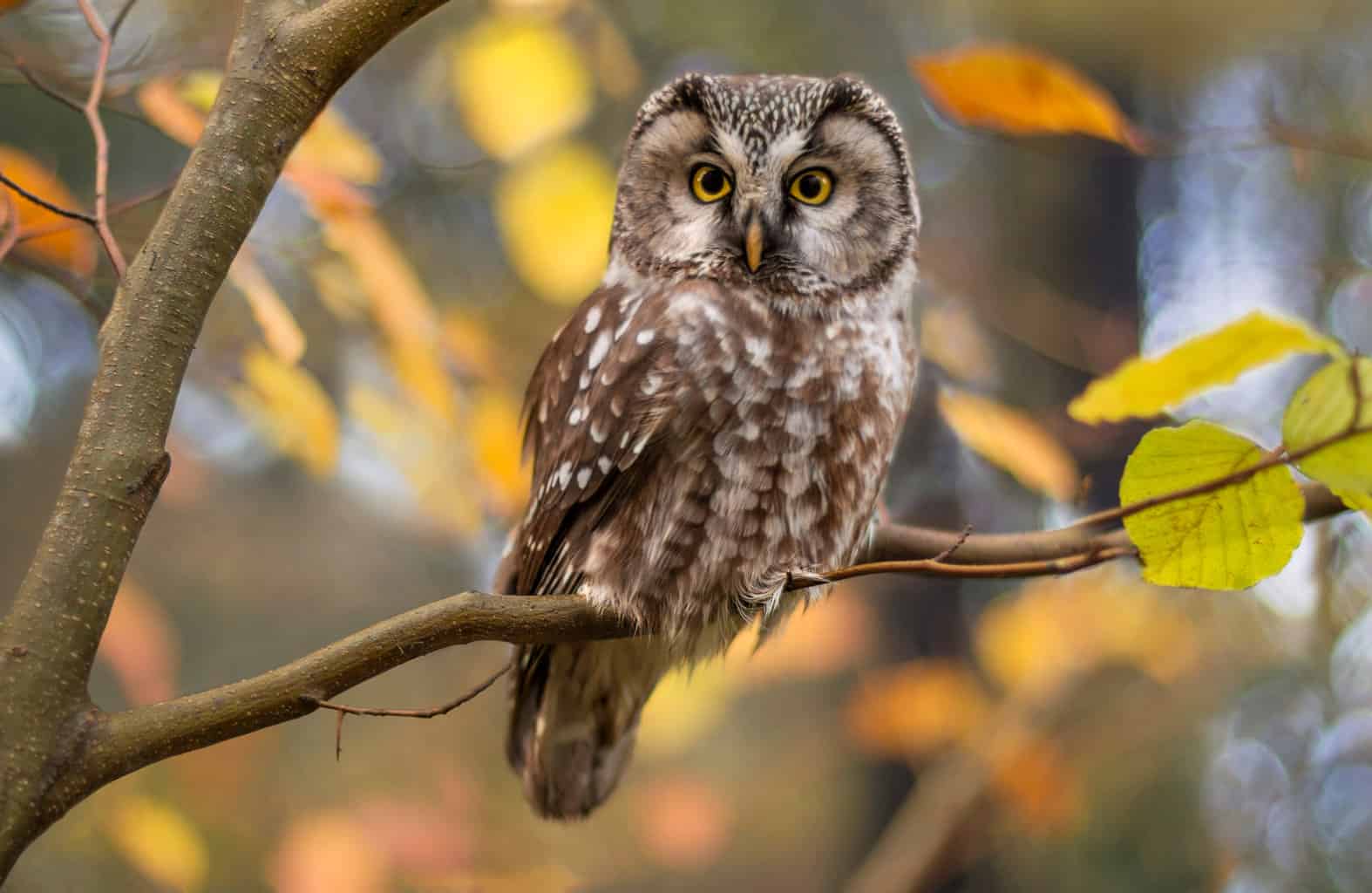
Male boreal owls have a song which is a series of 8 to 20 whistled toots that get progressively louder as the song goes on.
Those in North America have more notes and are slower than those in Europe.
Burrowing Owls
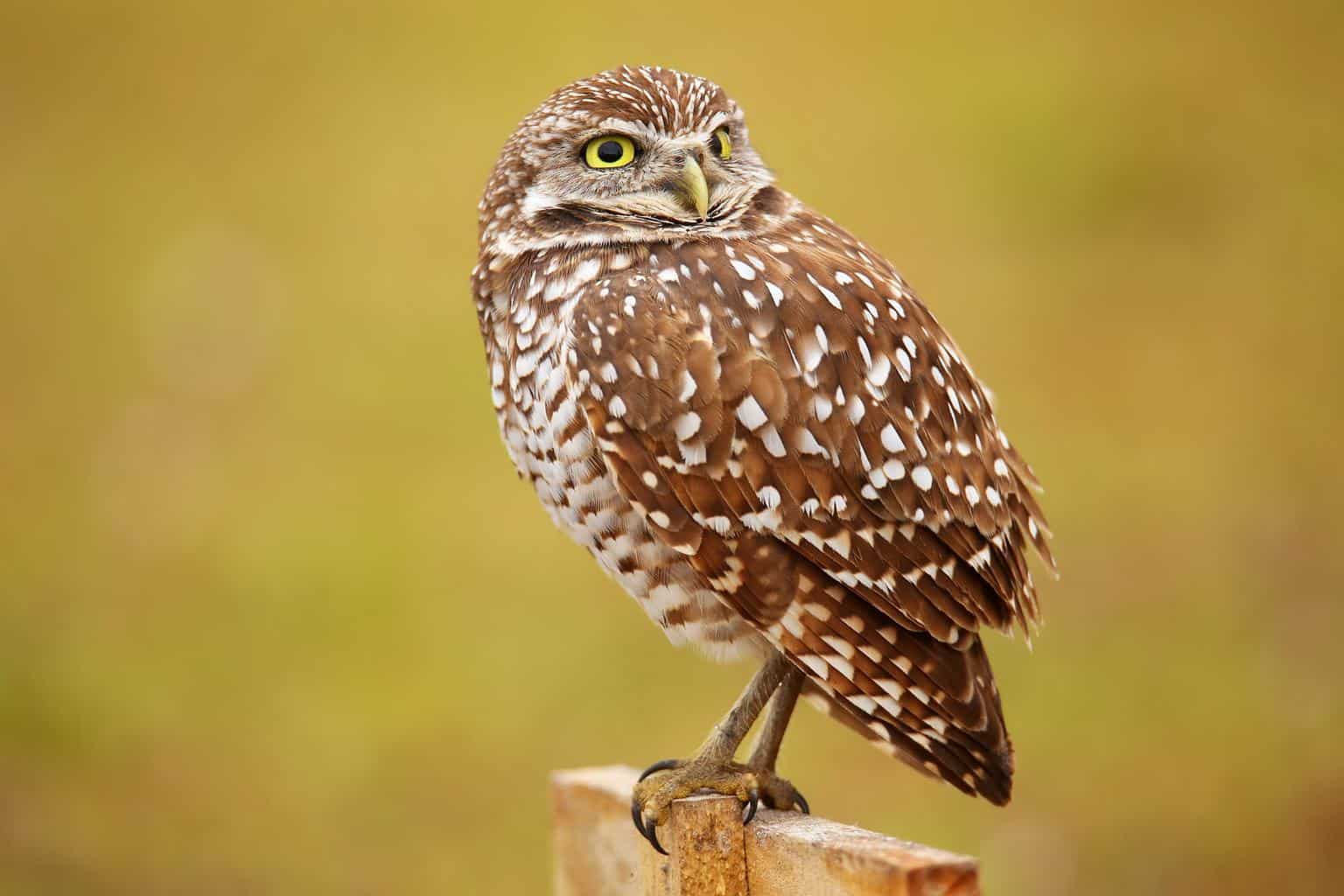
These owls are not particularly vocal but make cooing, warbling, rasping, screeching, clucking, and rattling noises.
A common noise is a two-note cooing that sounds like a quail. Males use this when defending territory and looking to attract a mate.
Eastern Screech-Owls
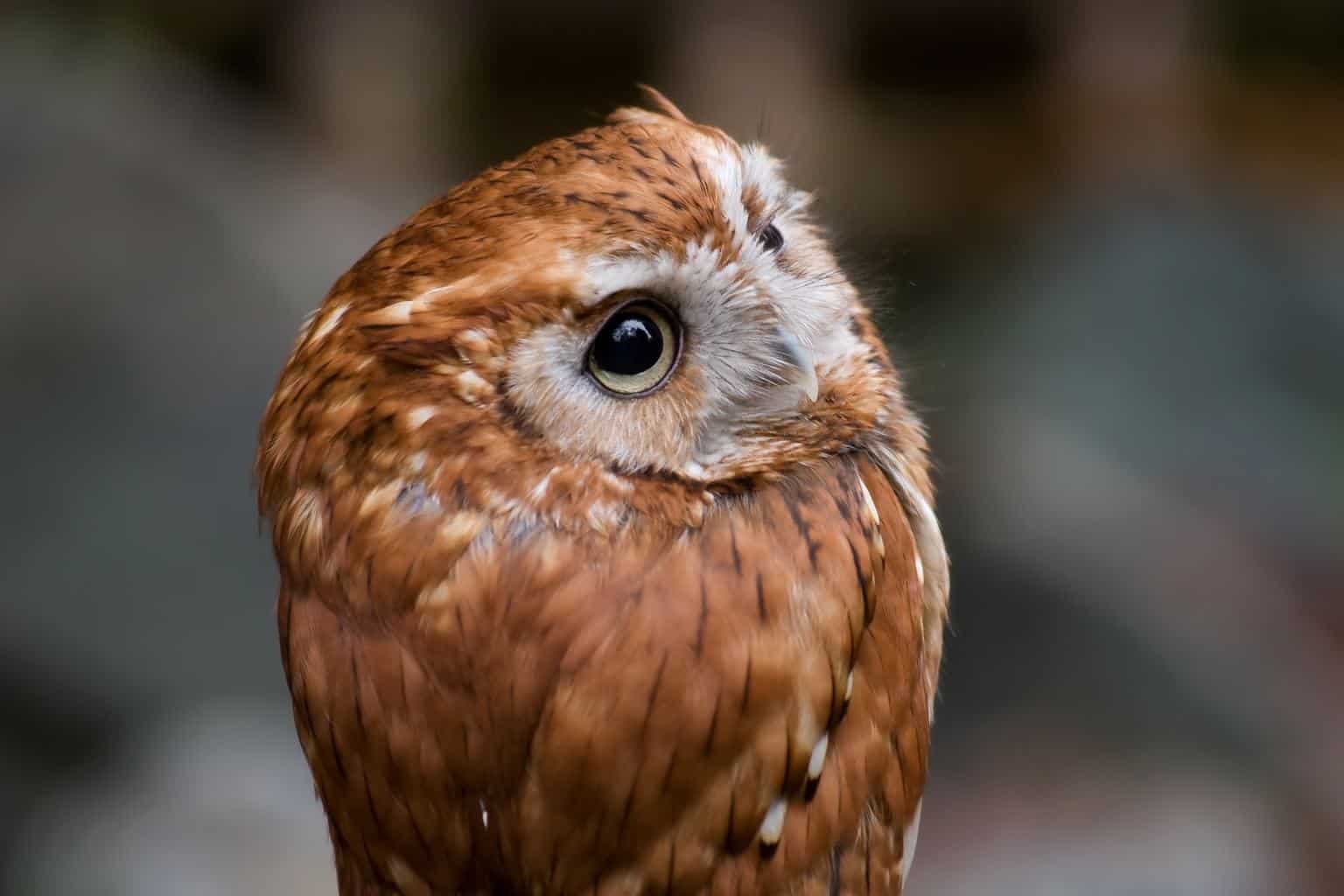
Both the males and females of this species sing. One common sound is an evenly-pitched trill, and another shrill, descending whinny.
The former is for family communication, and the latter is for defending territory.
These owls have many calls, including the screeches that give it its name, as well as soft, low hoots and loud, sharp barks of alarm.
Elf Owls
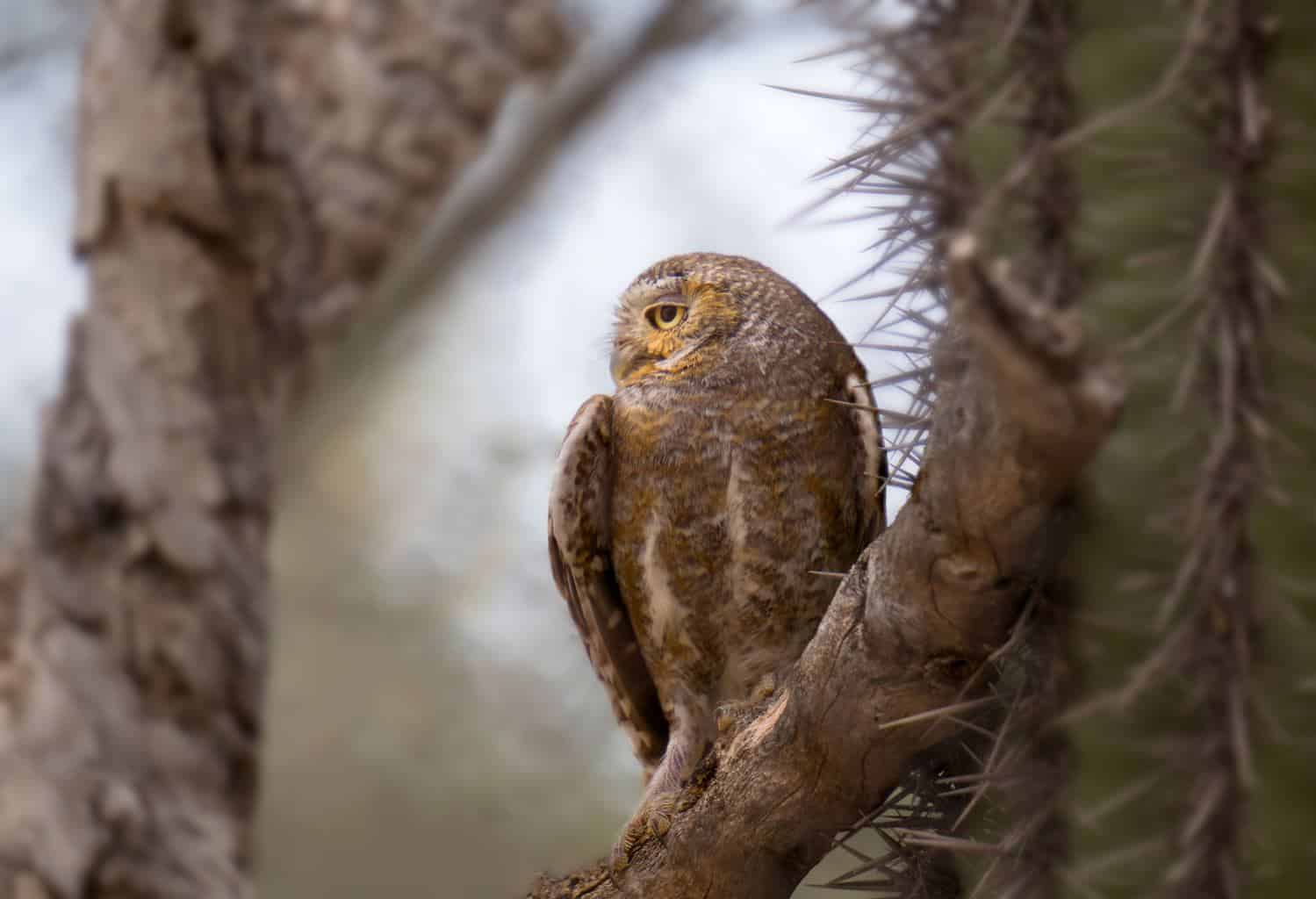
Male elf owls sing at night, emitting a series of 5 to 7 yapping notes in descending pitch towards the end. Calls frequently heard from this owl are a high whistle pee-u noise made during the nesting season and a sharp cheeur alarm call.
Flammulated Owls
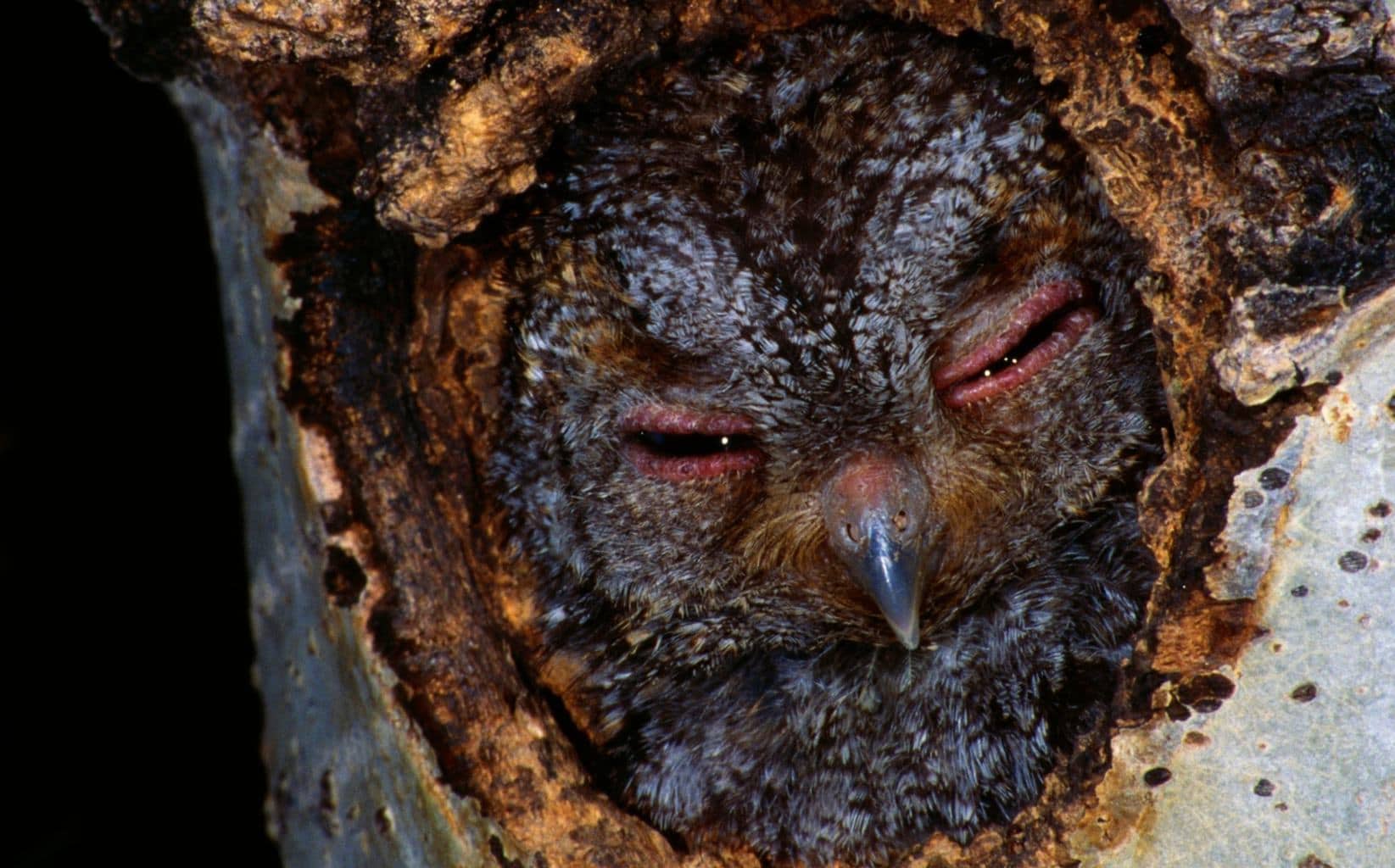
Flammulated owl males give a repeated low hoot. Humans often find it hard to pinpoint the direction of the source of the sound.
This hooting is to advertise to mating partners and to mark territory. They also make a range of smaller calls typical of small owl species.
Great Gray Owls
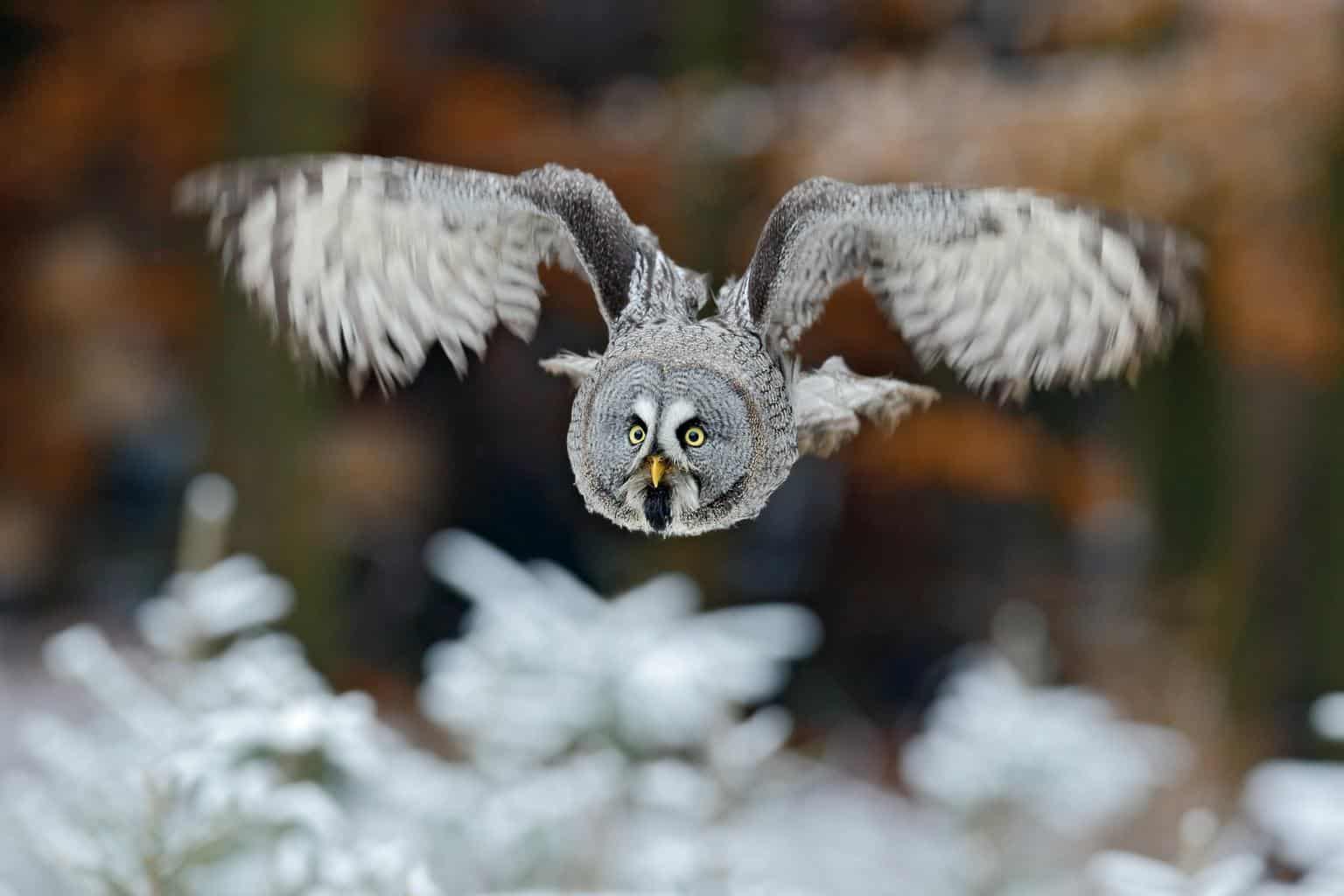
During the breeding season between March and July, males and females emit low-pitched resonating hoo sounds that last for 6-8 seconds, with around 30 seconds between calls. The female’s voice is a little higher than the male’s.
Great Horned Owls
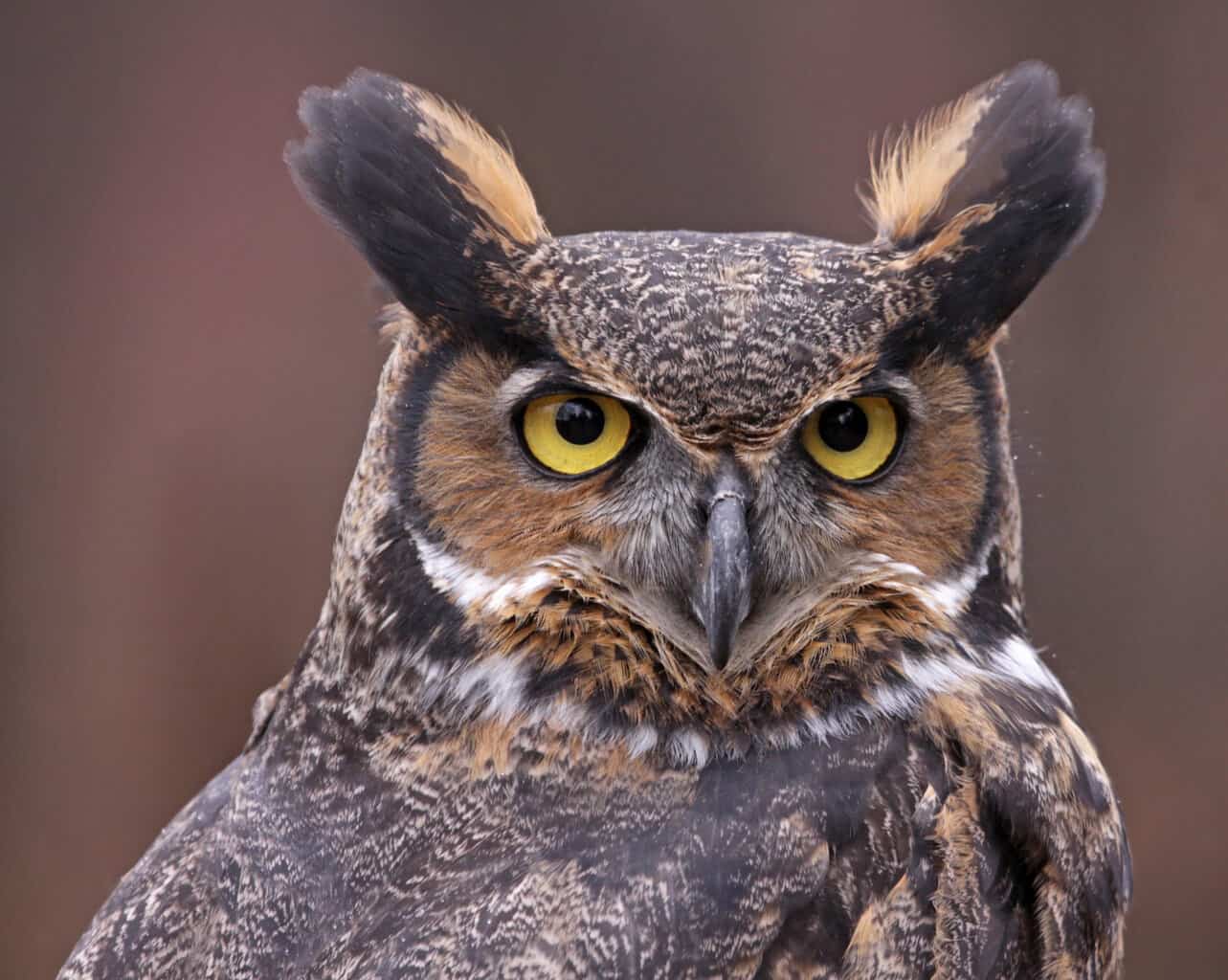
Great horned owls are known for the duets of their breeding pairs. The male issues several deep, soft hoots to advertise his territory but will also perform in duet, with their calls answered by a higher-pitched hooting from the female.
Long-eared Owls
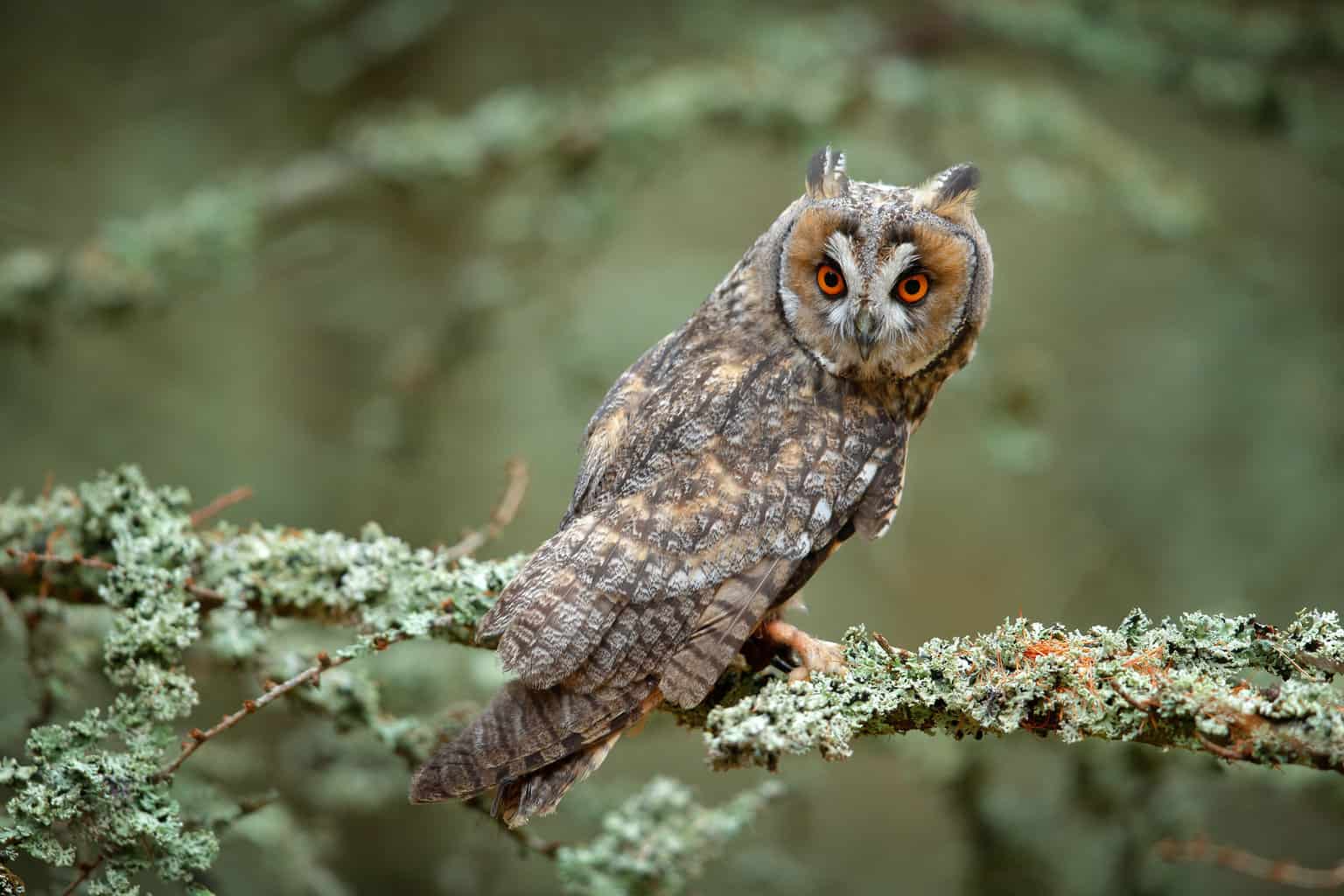
Long-eared owls remain quiet most of the year, but during the breeding season, the males sing complex series’ of whoo notes around 2-4 seconds apart.
The female has a higher-pitched call, like a bleating lamb, when in the nest.
Northern Hawk-Owls
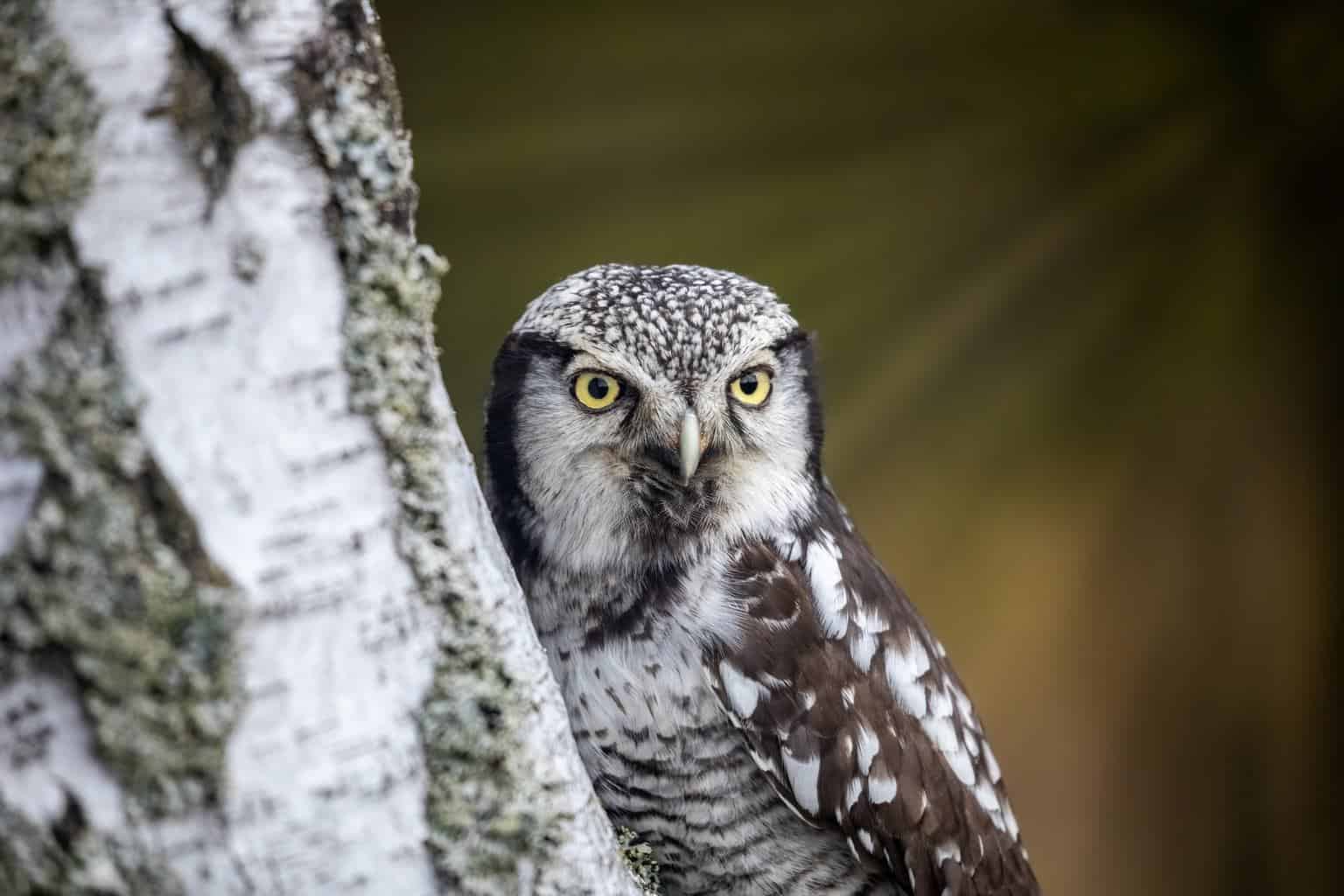
Often transliterated as ululululul, the males sing a rolling whistled song that lasts around 14 seconds during display flights to attract a mate.
Females have a similar but shorter and raspier song.
Northern Pygmy-Owls
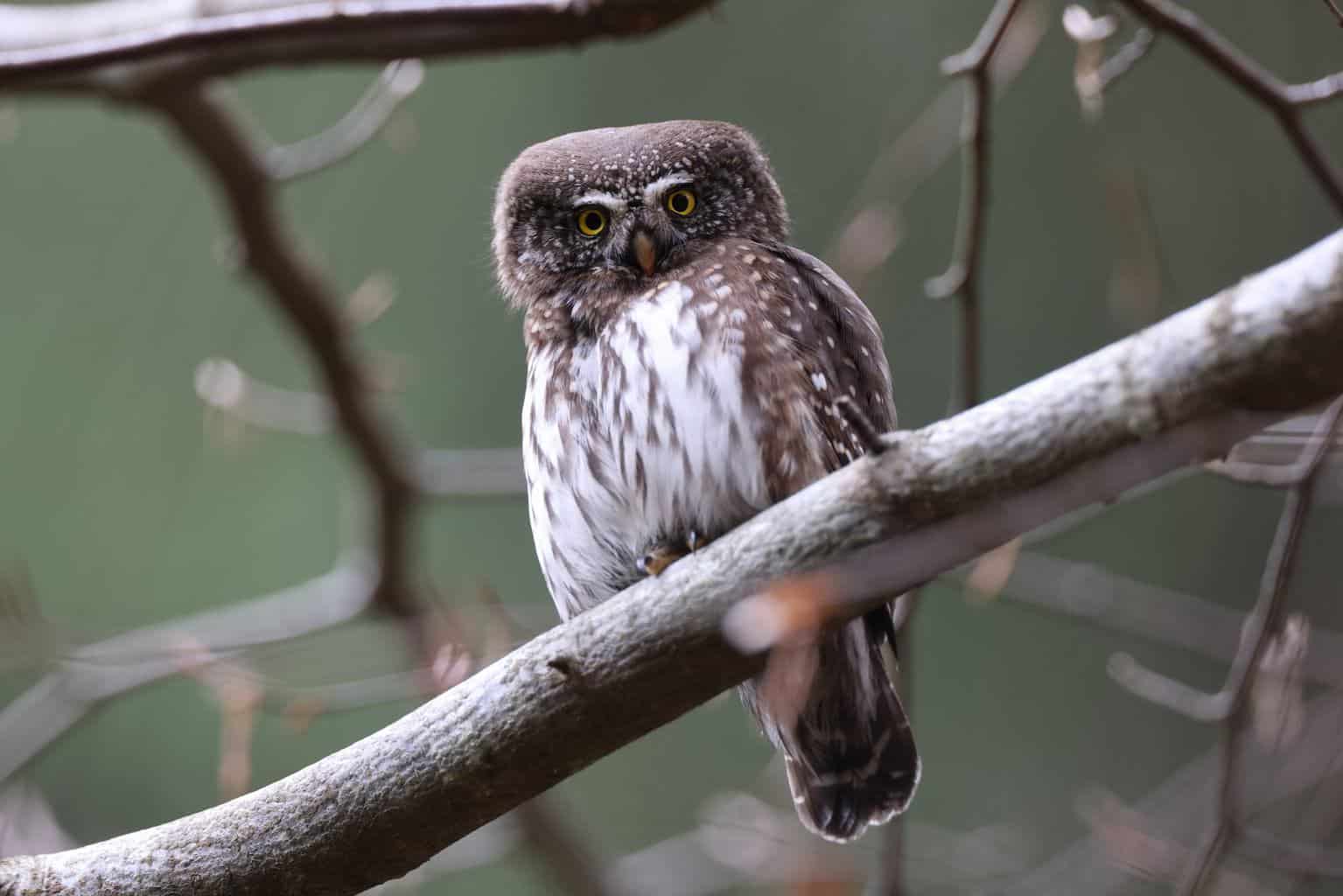
This owl’s song is a series of high, hollow tooting sounds spaced a couple of seconds apart. Males and females will sometimes duet together. A rapid, high-pitched trill often precedes this song.
Northern Saw-whet Owls
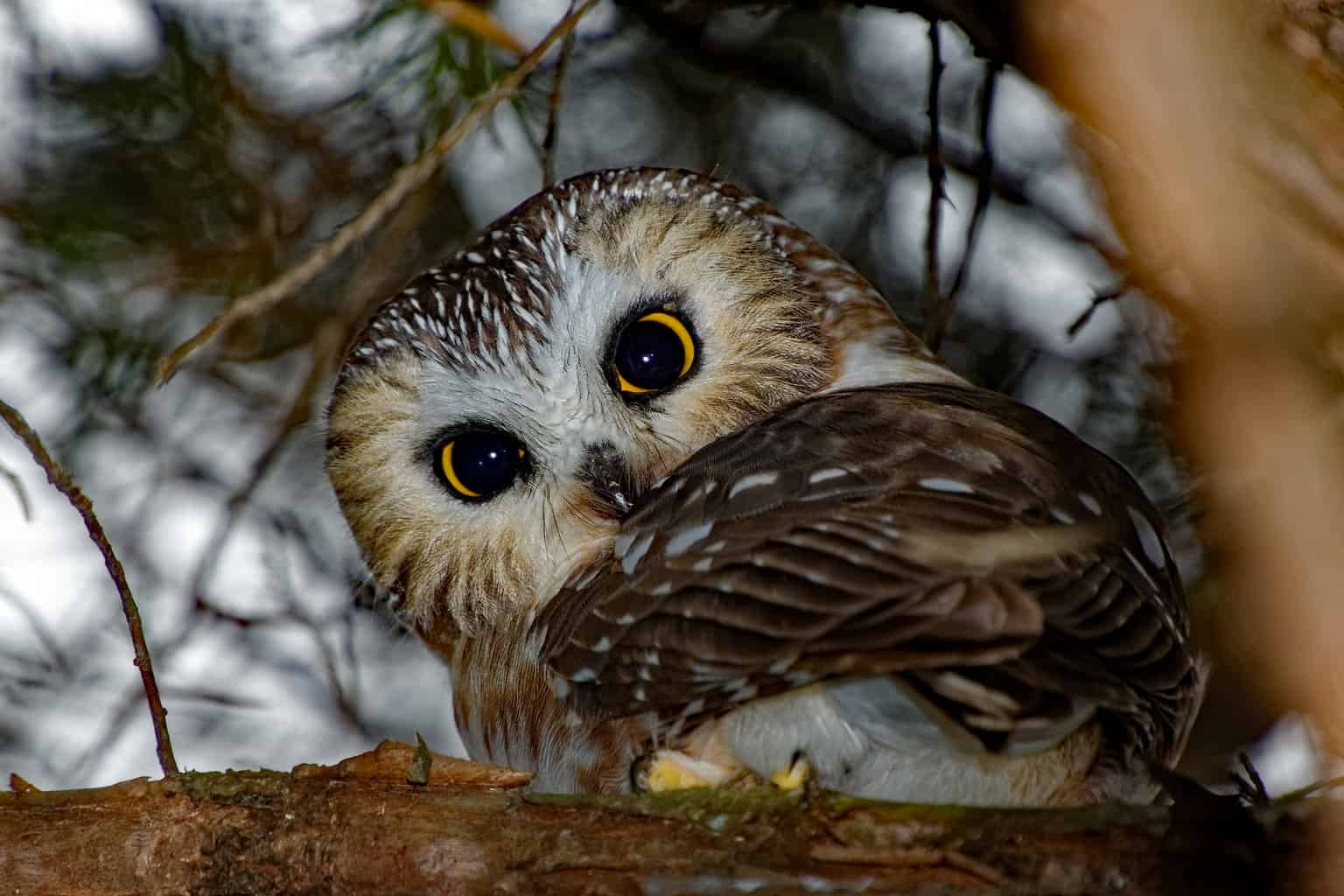
These owls call too-too-too a flat-pitch series of whistled notes at a rate of around 2 notes per second. Males use this song to advertise their territory, while other males respond with a faster, lower version. Females also use a version of the song in courtship.
Short-eared Owls

These owls are not particularly vocal, but males give a series of hoots during courtship flights, from the ground, or a tree perch.
Snowy Owls
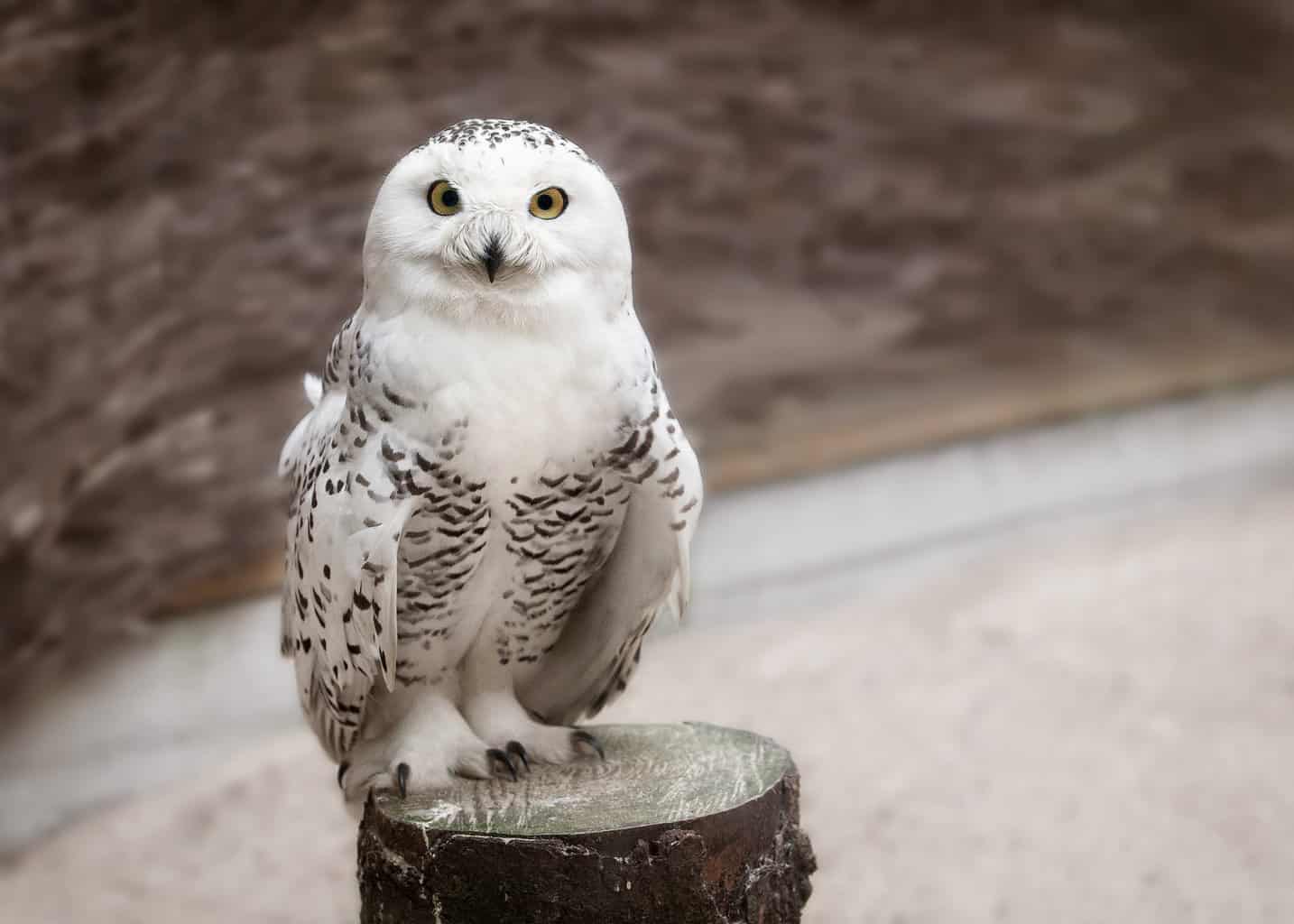
Snowy owls, both males and females (but especially males) make low, powerful, rasping hoots — 2 or up to 6 at a time. These sounds carry a long way and are often answered by other owls with their own hoots.
Spotted Owl
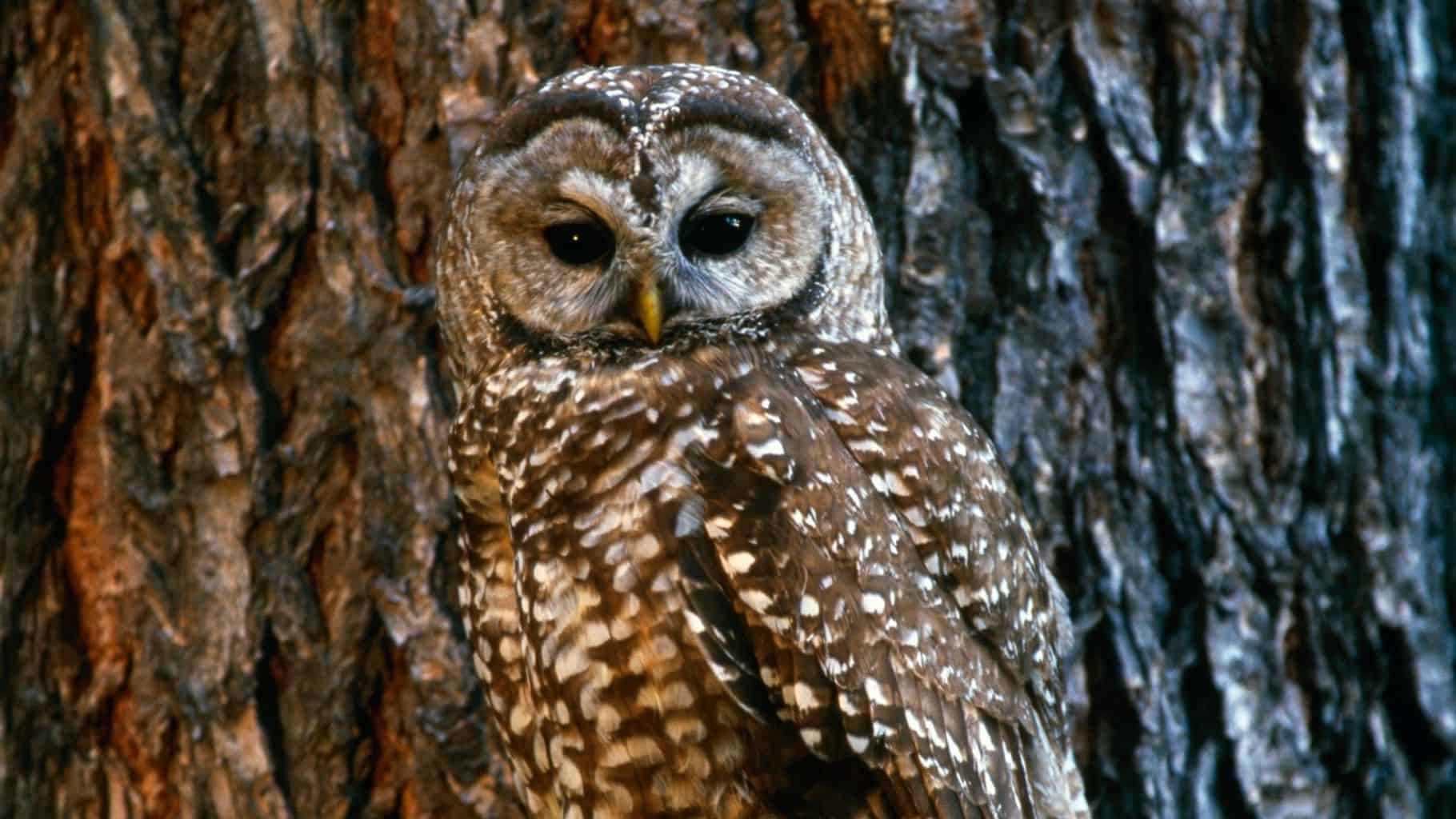
Spotted owls have varied calls of hoots, barks, and whistles, though only a few are commonly heard.
A series of four-hooted notes with the middle two closest together is a signal call used by both sexes.
Mated pairs whistle hollowly with a rising pitch at the end to keep in contact. Young also whistles to call for food.
Western Screech-Owls
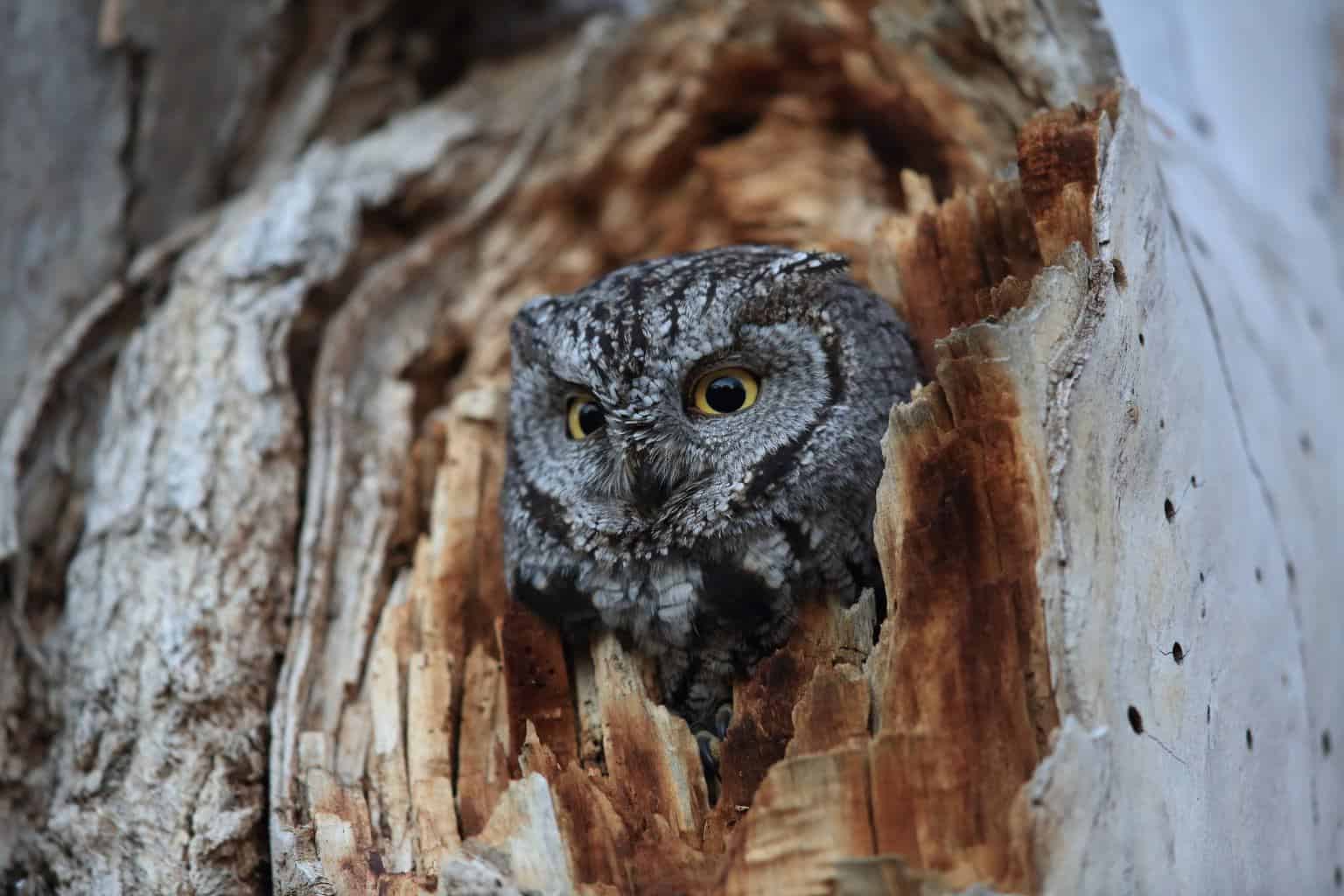
The most distinctive song of this owl is a series of 5-9 short, whistled hoots that speed up toward the end like a bouncing ball.
Duets of males and higher-voiced females are also common. There are also a series of other varied calls, such as double trills used when staying in contact with a mate, barks, and whinnies made by females in response to the male bouncing ball song.
Which Birds Sound Like Owls?
Now that we have explored what many of the different owls found in North America sound like, let’s look at some birds that sound like an owl (or at least like one of the particular species above). Bird Audio recordists have taken a keen interest in learning more about these birds.
Doves
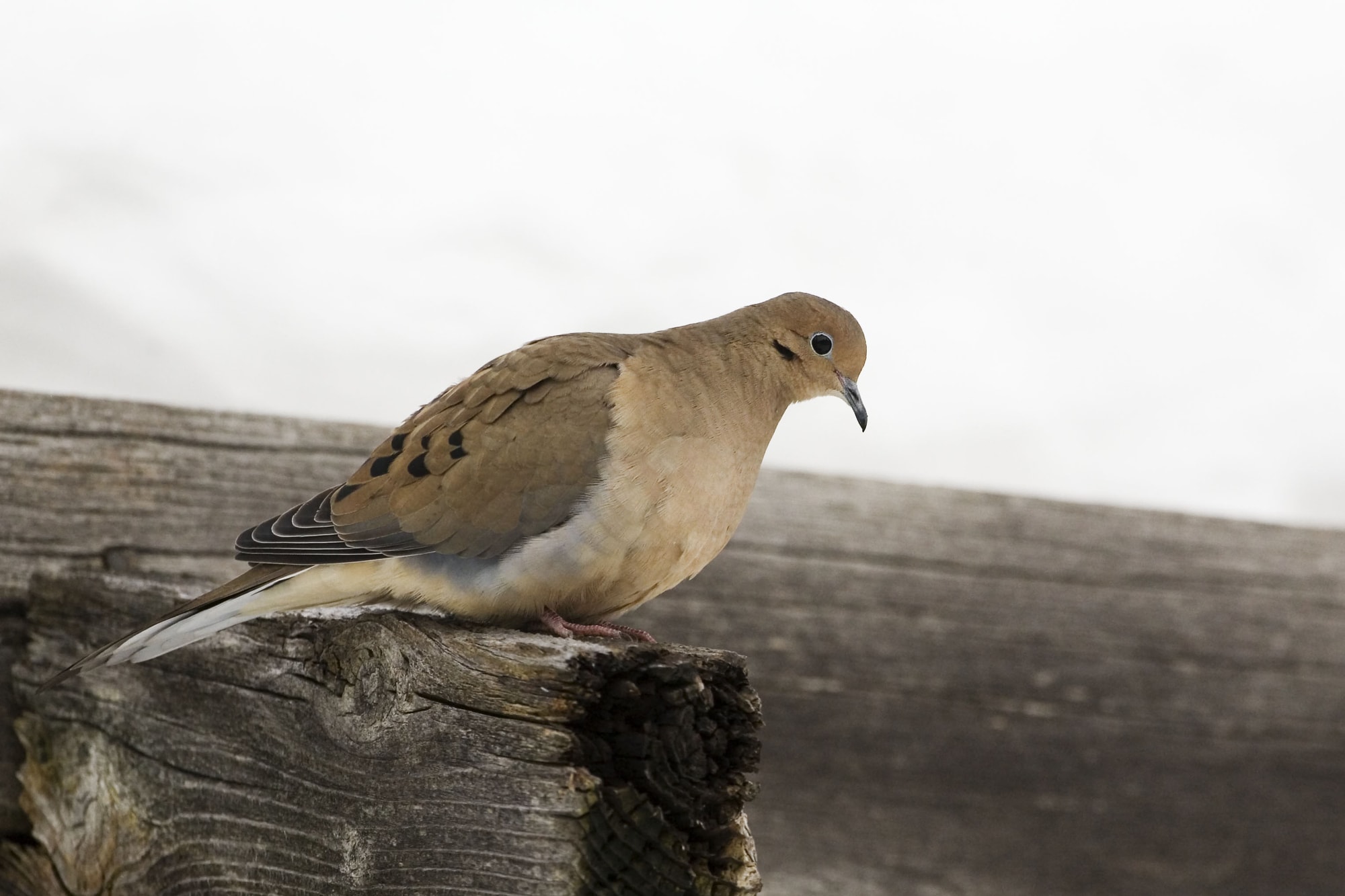
The mourning dove is one type of bird frequently mistaken for an owl. Their cooing hoo-hoo-hoooo sounds can often resemble the hooting of several owls above the untrained ear.
These birds make a sound more like the stereotypical hooting that many ascribe to owls, even though, as we have discovered above, owls make a very varied range of noises. This is a result of decades of recording bird sounds.
Remember, if you think you hear an owl during the day, you most likely have not, as most species are nocturnal.
A mourning dove is, in many cases, the most likely culprit, especially if you hear it just outside your window.
Some other doves also make soft cooing noises that people sometimes confuse with an owl hooting. Even if you’re a gatherer of bird audio, sometimes you can get confused.
Pigeons
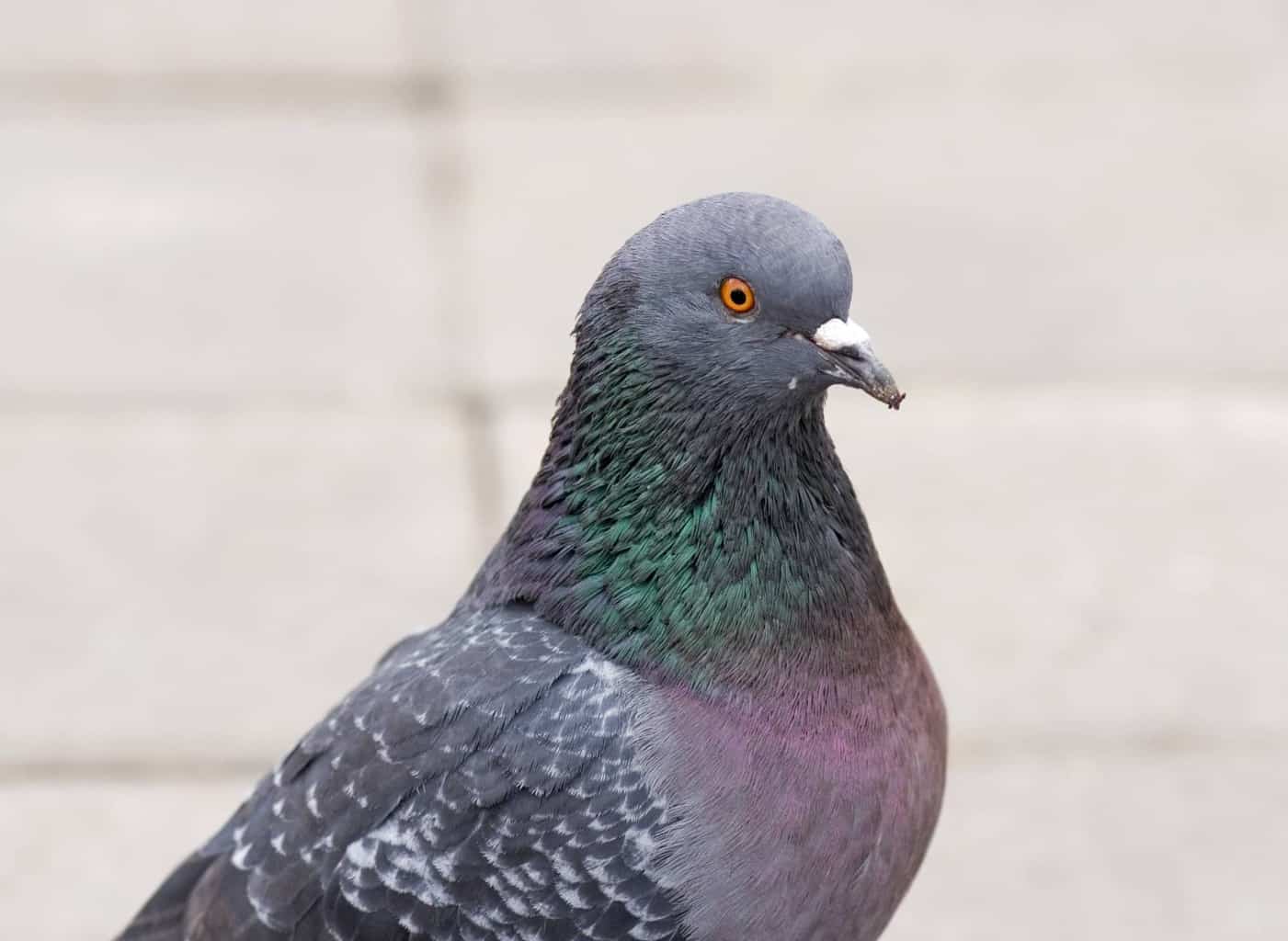
Pigeons often, like doves and many owls, make gentle hoo-hoo or cooing noises that might, especially when they call in the early morning or late at night, be mistaken for an owl. Instead of an owl, you might be hearing a rock pigeon, or a banded-tail pigeon, for example.
Whip-poor-wills
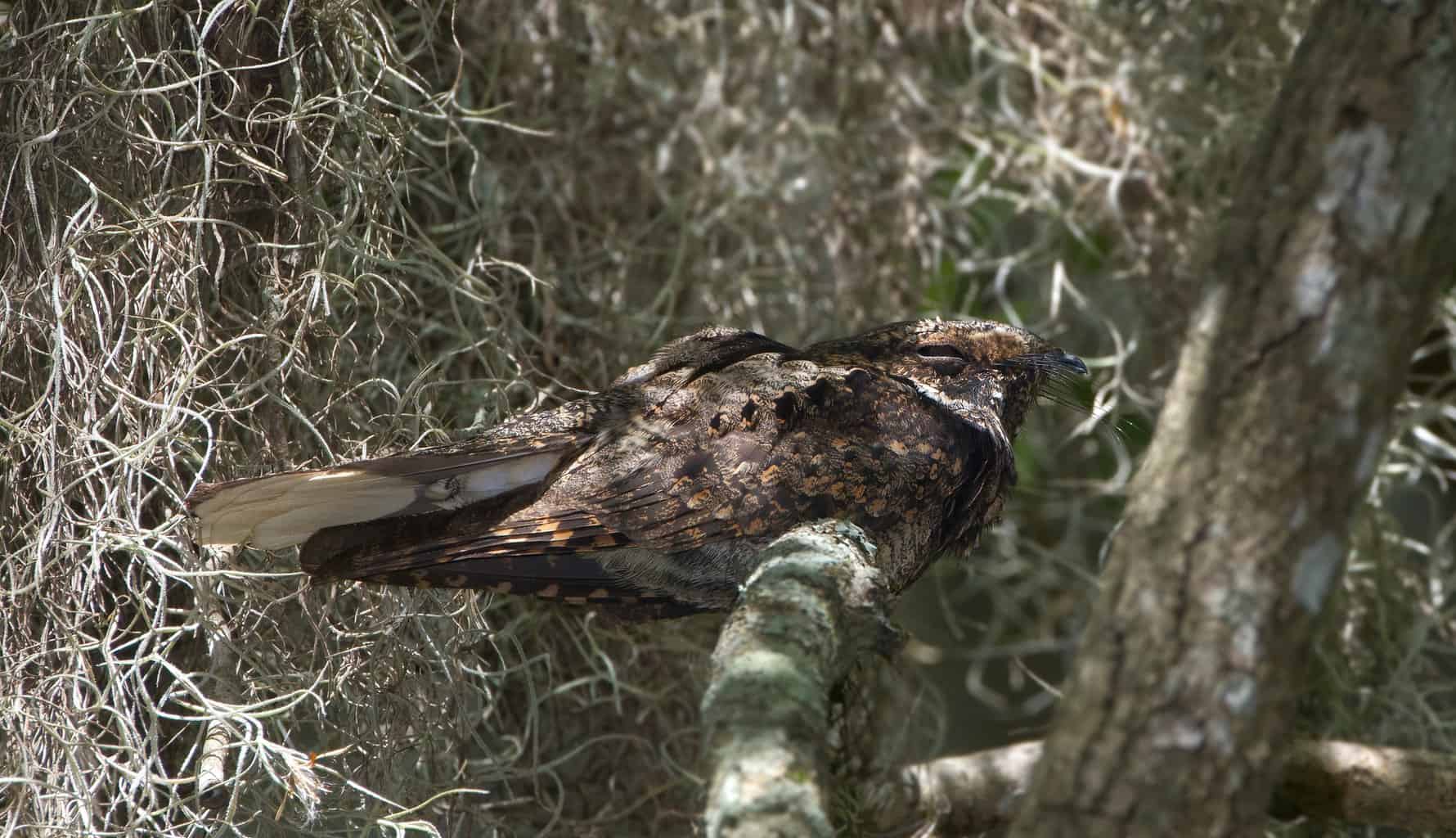
These birds, like owls, come out and are heard after dark. They won’t be found close to areas of human habitation but on a camping trip, you might hear these in a remote area.
These birds have a high-pitched, warbling call sustained for two seconds or more, while owls tend to have punchier calls, which come in shorter bursts. But since both are heard at night, they can be confused.
Buff-collared Nightjars
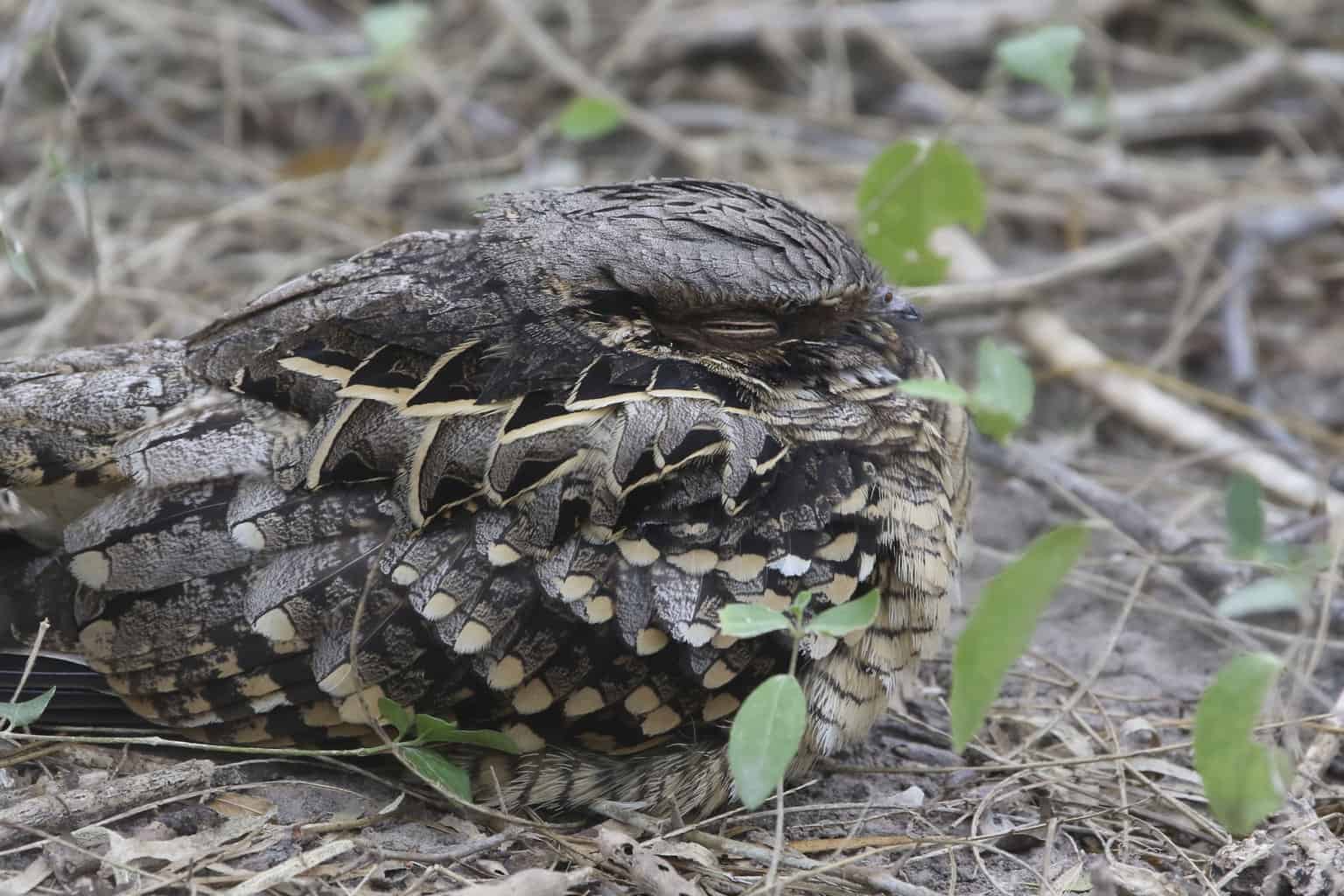
Western nightjars sound like a series of chuck and quirr calls and don’t sound much like owls.
But since these birds can also be heard calling one another at night, some people may confuse them for some kind of owl since owls are the best-known nocturnal birds.
Common Nighthawks
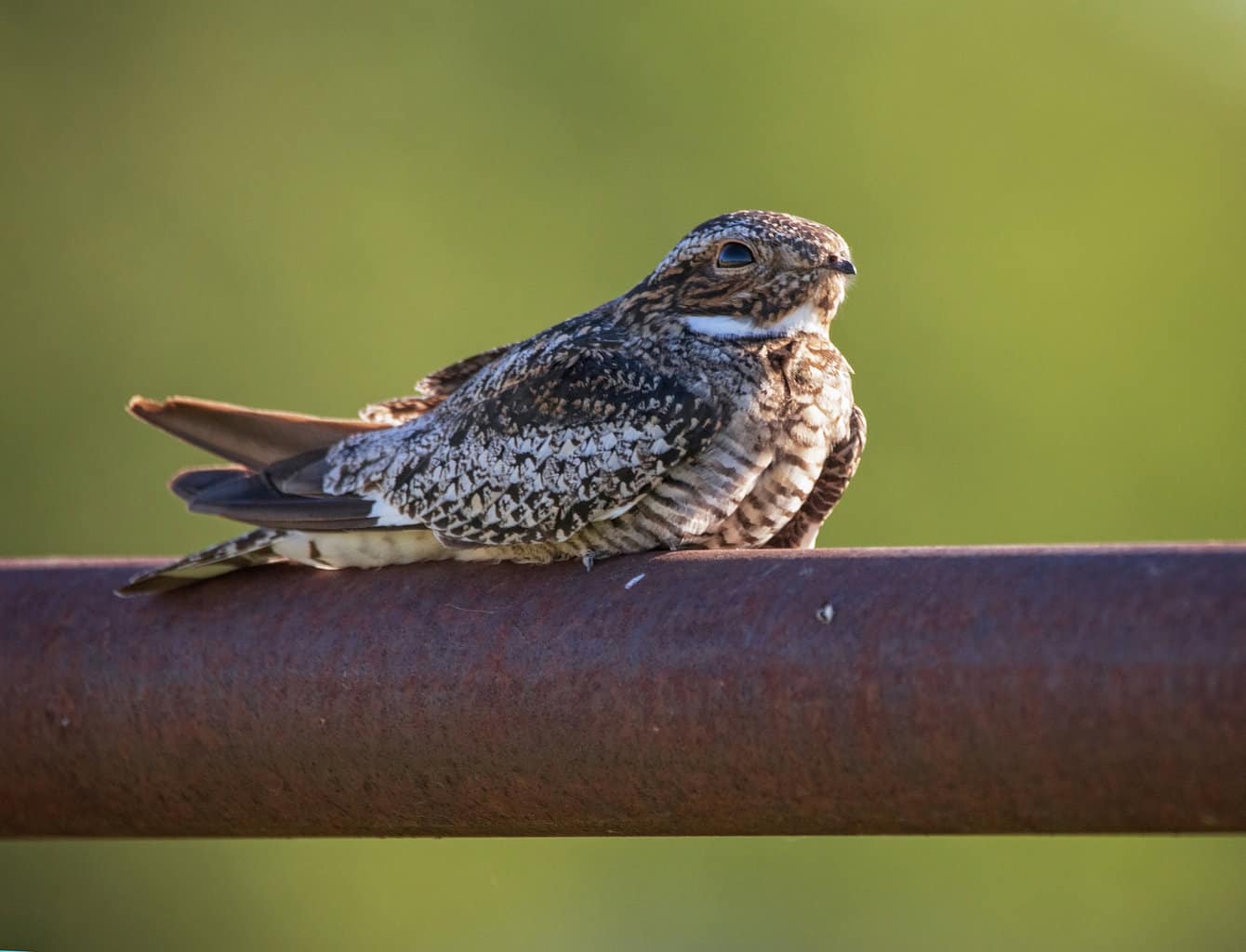
Active at dawn and dusk, these birds are sometimes confused for owls. While flying, these birds make a nasal peent or beer call, and courting males cry auk auk auk.
Chuck-will’s-widow
These birds give out a rolling and long call at dusk and during the night. They are named after their song, which sounds a little like this phrase.
While easily distinguishable from the calls of owls, some people still mistake them for owls when they call at night.

